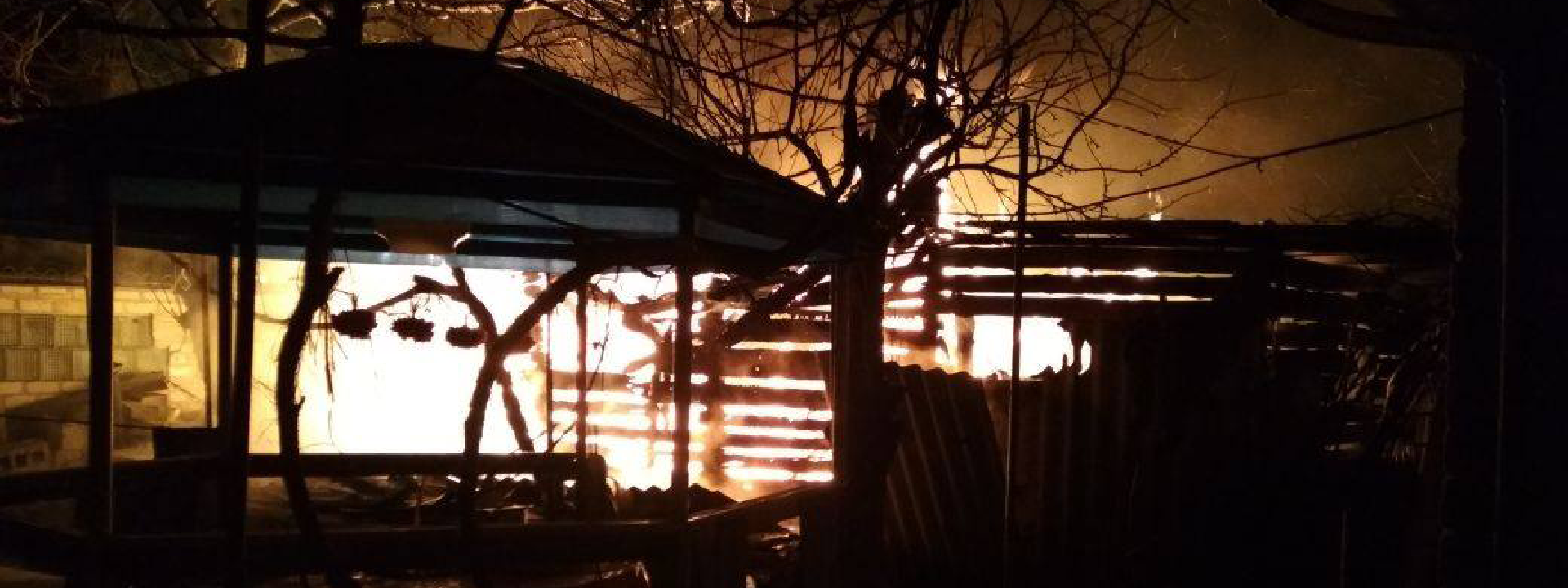Casualties at the Svitlodarsk Bulge
Reports of military casualties and multiple-launch rocket systems cause civilian casualties and ignitehouses
Casualties at the Svitlodarsk Bulge

Reports of military casualties and multiple-launch rocket systems cause civilian casualties and ignite houses

On the evening of December 18, heavy shelling from multiple-launch rocket systems (MLRS) caused at least eight civilian casualties including one child, damaged some 50 residential buildings, a school, kindergarten, clinic, and partially cut power and gas in government-controlled Novoluhanske, Donetsk Oblast. This shelling incident was one of the most destructive of 2017 in the ongoing conflict in eastern Ukraine.
Російсько-окупаційні війська обстріляли спальний район населеного пункту Новолуганське з реактивних систем залпового вогню БМ-21 «Град».
Фото-докази злочинів, дивіться за посиланням (https://t.co/WYqm9wHxc2) pic.twitter.com/k1ioH8j7sS— Defense of Ukraine (@DefenceU) December 19, 2017


[facebook url=”https://www.facebook.com/ato.news/videos/1792353890775409/” /]
This massive attack comes after heavy shelling from 152mm artillery in the area on December 17. These 152mm artillery systems are banned by the Minsk agreements. Due to their large calibre, 152mm shells can cause extensive damage to residential areas. Similar to other areas along the line of contact in eastern Ukraine, military presence and positions in residential areas attracts opposing fire, leading to civilian casualties and property damage.

The United Nations Office for Coordination of Humanitarian Affairs in Ukraine reported that the Novoluhanske shelling affected approximately 2,000 residents and forced civilians to flee in blizzard conditions. Novoluhanske has a population of about 3,700, including 500 children.


Social media reports indicated that a large concert being held in the town that evening may have kept the civilian casualty number lower than it otherwise would have been given the extensive damage to at least 50 residential structures.




The UAF reported they would send in a humanitarian and demining deployment to Novoluhanske the morning of December 19 due to the likely high presence of unexploded ordnance (UXO).

Elsewhere in the Svitlodarsk Bulge
Additional reports of intense artillery shelling and mortar fire onto neighboring, newly government-controlled, Travneve and Hladsove suggest an escalation of fighting at the Svitlodarsk bulge. The UAF reported ten incoming 122mm artillery shells and 40 incoming 120mm mortar shots in Travneve and twenty 122mm shells in Hladsove. Both 122mm artillery systems and 120mm mortars are banned by the Minsk agreements.

Observations by the Organization for Security and Co-operation in Europe’s Special Monitoring Mission (OSCE SMM) to Ukraine indicate that the increased military presence in Travneve is establishing itself by occupying uninhabited houses and digging new trenches.
The SMM noted that members of the Ukrainian Armed Forces had occupied some of the latter houses… At the western end of Haidara Street, the SMM observed an armed man near a recently dug trench.
The Svitlodarsk bulge is north of non-government-controlled Debaltseve, a key strategic and logistical point in the war in the Donbas. The Battle of Debaltseve (January-February 2015) was one of the most notable battles of the ongoing conflict, in which the Russian-led separatists, Russian 5th and 6th Tank Brigades, and 37th Motorized Infantry Brigade led a rout of Ukrainian forces and allowed the Russian-led separatists to capture Debaltseve and its key railway hub. The magnitude of this battle also led to the second Minsk agreement. @DFRLab previously reported about the Svitlodarsk bulge last winter, when there was disinformation surrounding reports of heavy fighting in the area.
@DFRLab will continue to monitor the current escalation of conflict around the Svitlodarsk bulge and the ongoing threat to civilians it poses.
Follow the latest Minsk II violations via the @DFRLab’s #MinskMonitor.
Also, follow @DFRLab on Twitter for more in-depth analysis from our #DigitalSherlocks.

